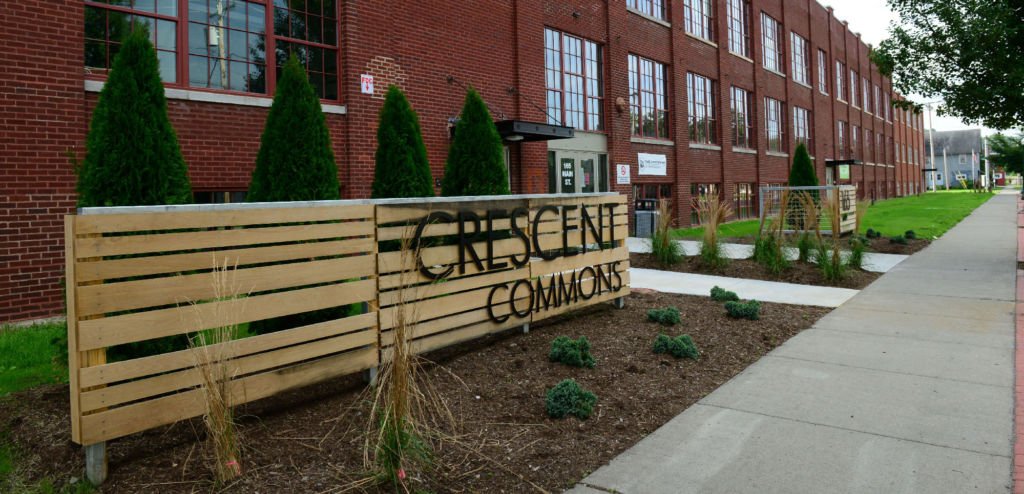Written by Tim O’Donnell of the National Trust for Historic Preservation
In its heyday, the Crescent Corset Company employed more than 700 women, many of them Italian immigrants, at a factory on South Main Street in Cortland, New York. The large industrial brick building, built in multiple stages starting in 1923, quickly became an anchor for the small city, which sits between Ithaca and Syracuse.
They came up with a plan to convert the factory into a mixed-used complex, believing there was demand for both residential and commercial units. The National Trust Community Investment Corporation (NTCIC) supported the companies with state and federal historic tax credit equity, which Lockwood says was necessary for getting the adaptive reuse project off the ground.
“In Cortland, which is 15,000 to 20,000 people, you can’t talk to too many people [whose] grandmother didn’t work there, or their sister, or their aunt,” said Ben Lockwood, president and CEO of Housing Visions, the nonprofit developer that has helped transform the rundown building into a vibrant commercial and residential space over the past several years.

The saga of the Crescent Corset Company factory, as it was formerly known, is similar to that of many other manufacturing sites in American cities during the second half of the 20th century. Over the years, activity within the building slowly declined until it became vacant, and a once proud structure had become an eyesore.
But the factory’s fate changed when Housing Visions partnered with David Yaman Realty Services, a local firm. Together, they produced an adaptive reuse plan that brought the former factory back to life, once again making it a keystone in Cortland.
Click below to read the full article.